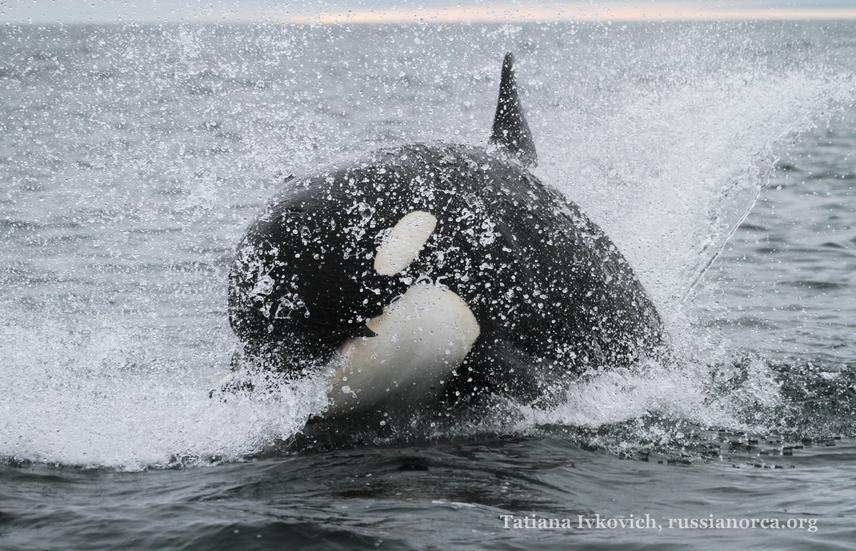Tatiana Ivkovich
Other projects
6 Jan 2011
The Matrilineal Killer Whale Society: The Critical Importance of Females for Population Survival
The project aim is to build a foundation for orca habitat protection in Kamchatka and Kuril Islands and to promote public awareness about marine habitat degradation and orca conservation in Russia.

Orca female with a salmon near Paramushir Island. © Tatiana Ivkovich, russianorca.org
Orcas (Orcinus orca) are specialized hunters. Different populations depend on particular prey types that influence reproductive success, abundance and behaviour. Our previous study showed that orca reproduction success varied from season to season what could be connected with variation in prey abundance. Atka mackerel (Pleurogrammus monopterygius) was the main orca prey in Avacha Gulf (Southeastern Kamchatka) before 2006 when Atka mackerel breeding places in gulf were depleted. Salmon (Oncorhynchus sp) is the main orca prey in the gulf now. The role of exact salmon species and present role of Atka mackerel in orca diet is unknown. The areas outside Avacha Gulf such as Kuril Islands remain unstudied. Evaluation of the role of different fish species in orca diet and detection of feeding areas will be useful to ensuring successful ecosystem approaches to marine conservation efforts. Atka mackerel and salmon species are included into variety of trophic chains and are basic for supporting biodiversity of Russian Far East. And they are under pressure from overfishing and poaching. The study area is a rich marine habitat characterized by a high level of biodiversity. Our project will build a foundation of marine habitat conservation around Kamchatka and Kuril Islands using orcas as a flagship and umbrella species.
Project objectives are:
(1) to reveal the role of various fish species in orca diet during the summer months in Avacha Gulf, Kamchatka, and near Paramushir Isl and (Northern Kuril Islands, Okhotsk Sea);
(2) to map and characterize important orca feeding areas inside study sites;
(3) to evaluate the influence of prey abundance on orca behaviour and survival;
(4) to promote people’s awareness about orca habitat degradation and the implications of aquarium captures on wild populations. We will also contribute into the development of marine ecotourism in the study area and in nature conservation skills between biology students and team-members. Step by step we will educate and attract more people to think about the importance of marine habitat conservation and to take action.